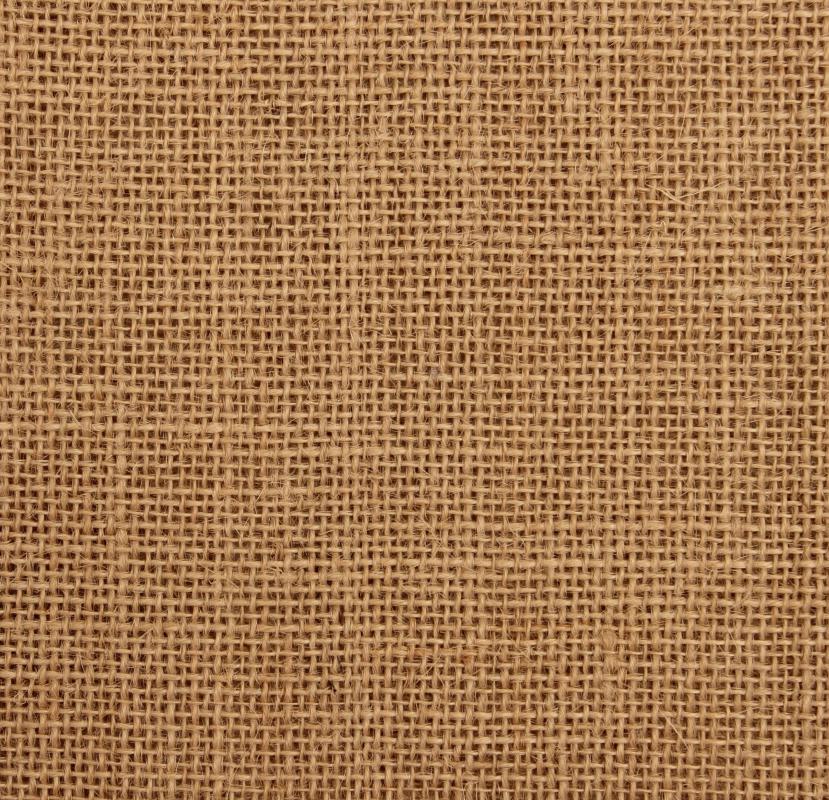At DelightedCooking, we're committed to delivering accurate, trustworthy information. Our expert-authored content is rigorously fact-checked and sourced from credible authorities. Discover how we uphold the highest standards in providing you with reliable knowledge.
What are Jute Leaves?
Jute leaves are the leaves of certain jute plants, used as a food source in Asia, the Middle East, and parts of Africa. In addition to adding a distinct flavor to food, these leaves also have nutritional value, and they act as thickeners in soups, stews, and sauces. They are also called saluyot or ewedu depending on the region of the world in which one is cooking. It is possible to grow jute for its fresh leaves in some parts of the world, and some specialty stores also stock it in fresh, frozen, or dried form, depending on their location and size.
Jute is a plant with many uses. All plants in the Corchorus genus are considered jute, although two have particular economic and culinary value, C. olitorius and C. capsularis. The leaves of these plants are simple, and they may have slightly serrated edges. When harvested young, jute leaves are flavorful and tender; older leaves tend to be more woody and fibrous, making them less ideal for consumption.

The stems of jute are used to make rope, paper, and a variety of other products. Jute has been used as an all purpose plant in Asia for several centuries, and Europeans were introduced to jute rope and textiles when they first began to explore India. Jute leaves, however, did not appear to catch on with European explorers. This seems to have been the case with a large number of Asian foods, as many commonplace Asian dishes and foods still seem quite exotic to the Western palate.

People who cook with jute leaves use them in soups, stews, curries, vegetable dishes, and sometimes tisanes or teas. The jute tends to get rather gluey and mucilaginous, like okra, another common vegetable thickener. It is also said to have its very own distinct flavor, which some people find quite enjoyable. Jute leaves are also a good source of nutrition, particularly beta carotene.

Like spinach and other leafy greens, jute leaves can be cooked whole as a major component of a dish, or they can be loosely chopped so that they blend better with other ingredients. Some cooks like to salt the leaves and rest them before cooking, to draw out some of the slime which can make them troubling to the palate. The longer they cook, the more slimy and dense they get, so it is important to pay attention to cooking times in recipes which call for jute leaves.
AS FEATURED ON:
AS FEATURED ON:













Discussion Comments
Mulukhiya can be found in middle eastern grocery stores in the freezer. "Montana" is a well known brand name.
@ysmina-- Have you checked International food stores? Jute manufacturers in Asia export a lot of jute to other countries. Usually Arabic and Indian groceries carry it in either frozen or dry form. Some also have it in canned form, but I don't recommend that. The frozen and dry ones are easier to use and taste better.
And no matter what form it's in, make sure to soak it in warm water first to get rid of the gluey content. Unless you like that of course. I personally don't like it and soak it until most of it is gone. If you are not cooking with it and just using the jute leaves for drinks and tea, washing in cold water is enough.
In India, jute leaves are called "mitha paat," which means sweet leaves. My favorite recipe with it is a cold drink made with jute leaves, ginger and cinnamon. This drink is also popular in the West Indies, maybe because of the large Indian population there. Over there, they call it the West Indian Sorrel drink.
I didn't know that jute recipes and jute fabric is common in the Middle East as well. It's very popular in Southeast Asia. Other regions must also be importing jute from Asia because as far as I know, it grows in places where rice grows. That's why it's so common in India and China.
Back home in India, they make fabrics and carpet from jute threads. I actually have a saree (Indian traditional dress) made from a combination of silk and jute. It's beautiful. There are also areas in India known for woven jute carpets.
In Egypt, they make a beef stew with jute leaves. Jute is called "mulukhiya" and it's also the name of this stew. I had it a couple of times while I was in Egypt, it's really tasty.
It is similar to our kind of beef stew with chunks of beef, onions and cilantro. What makes it different is the jute leaves. It gives a different aroma to the stew. Egyptians serve this stew with rice and you can also squeeze lemon on it.
I'm not sure if everyone makes this dish this way, but at the restaurants where I had it, they had used dry jute leaves in small pieces soaked overnight. I guess the jute has to be either wet or fresh for it to work. Along with the beef broth, it makes a really nice, thick, slightly gelatinous stew.
Does anyone know if jute products are available in the US? I've been wanting to make this stew at home but I have no idea where I can get jute leaves.
can you suggest a product made primarily of jute as a proposal product for my feasibility study? thanks!
Post your comments